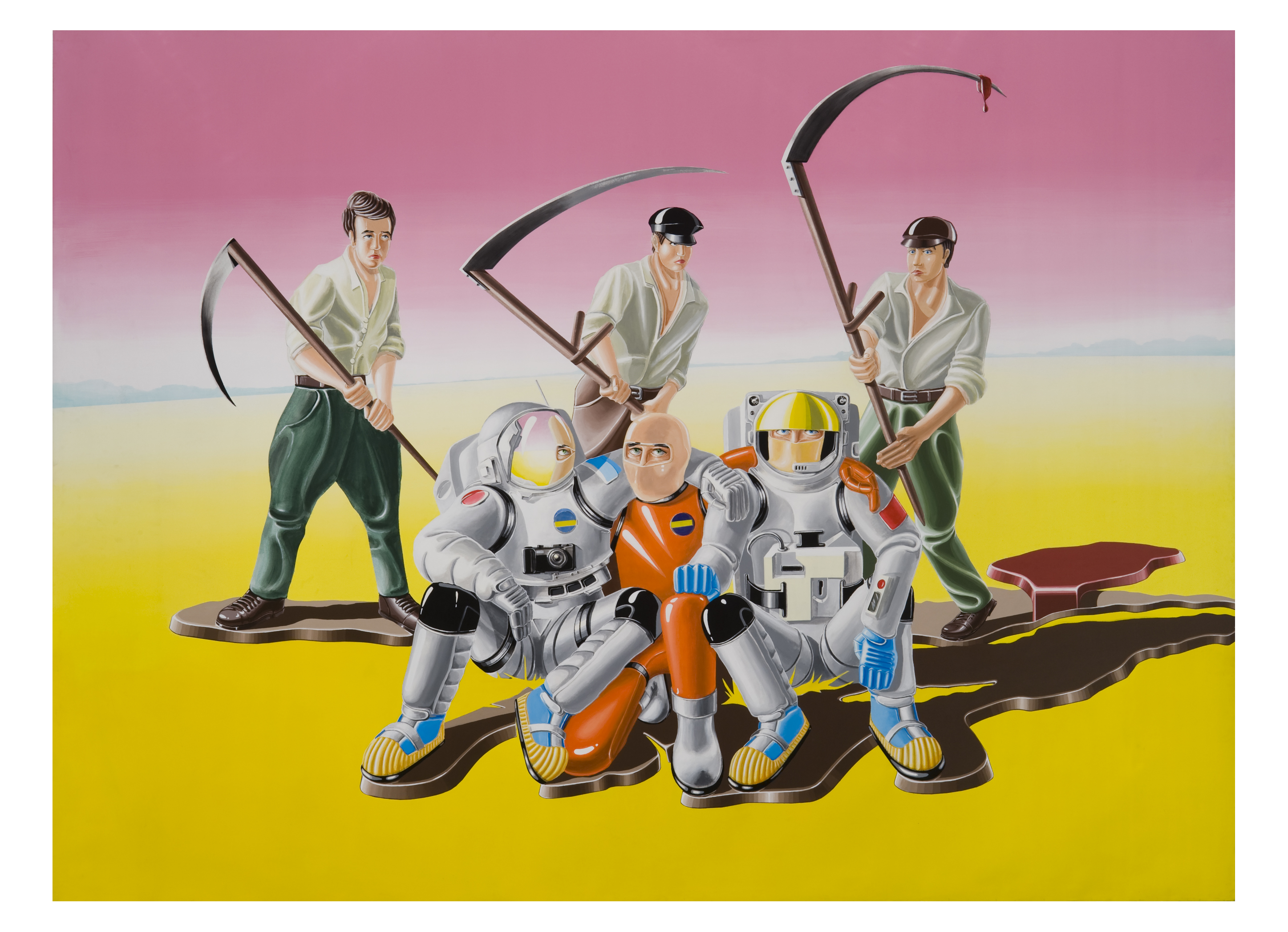LAZNIA 2 2015 - Vilnus in Gdańsk - „In general, I am brave in art”
„In general, I am brave in art”
Linas Jablonskis, Evaldas Jansas, Jonas Jurcikas , Andrius Kviliūnas
Curator: Raminta Jurėnaitė - Modern Art Center/Vilnius.
4.09 – 01.11 CCA Łaźnia 2
Opening: 3rd September at 7 pm
Everyone knows that state of mind — when the sense of reality breaks down, when you no longer know if what happened really did happen, or if you just imagined it. Harder still is when reality becomes chaos and when the rules of absurdity begin to prevail over daily life, and when individuals lose the ability to control themselves.
Such are the psychological and social conditions of individuals and society being excessively studied by four Lithuanian artists: Evaldas Jansas, Andrius Kviliūnas, Linas Jablonskis, and Jonas Jurcikas. Exhibiting together for the first time, none of these artists belong to any one specific group of artists.
Though they appear alongside each other, they assume different roles: the anarchist, the apologist, the outsider and the creator of utopian models. All of them share a longing for meaning as they each individually showcase the absurd.
Evaldas Jansas arrived on the creative scene in the early 1990s with performance art, art actions and video art, immediately assuming a controversial and radical position. To this day he remains the most non-conformist of artists — a provocateur and anarchist. Though Jansas records the entirety of events and personalities from the art world in documentary film chronicles and interviews with an almost obsessive approach, he also devotes equal attention to society’s less fortunate members: the homeless, alcoholics, drug addicts, prisoners. He positions himself and many other artists dangerously close to those on the “margins” of society.
Andrius Kviliūnas, in a video interview with Evaldas Jansas, remarks: “In general, I am brave in art”.” In truth, we rarely encounter such relentless exhibitionism in contemporary art — a mixture of self-abasement, self-pity, narcissism, and sense of humor. Kviliūnas’ films are simultaneously tragic and comedic.
After completing his painting studies at the Vilnius Arts Academy and following the death of his father, Kviliūnas returned to live with his mother in his provincial hometown of Panevėžys, remaining there for seventeen years. His mother’s confining small unit in a five-story bloc apartment building became a shared place of life, creativity and indulgence. The boundaries between these activities blur in the everyday lives of the artist and his mother. Filming in the kitchen or in the sitting room, the actors in his performance pieces are the artist himself, his mother, or both of them together. On rare occasions, a drinking buddy may make a special appearance. The “children’s” room also performs animation studio and editing functions. Two people thus create an earthly paradise-hell.
There are many ways to lose touch with social reality and a sense of time. Linas Jablonskis chose a method once cultivated solely by the privileged and richest members of society. He simply shut the doors to his apartment or the library of graphic arts collection he headed at the university, and removed himself from contemporary social realities. Day after day, Jablonskis would read books, review and catalogue graphic art works and art albums, browse the internet, listen to music or draw. It is in his drawings that the artist’s introvert side reveals itself most clearly, producing a unique hybrid of diary and fictitious world encyclopedia, complete with images and brief text entries.
The enormous canvases by the young painter Jonas Jurcikas are nourished by distrust of the present, past, and future. Everyday life is full of misunderstandings, while personal and collective memory only serves to deceive, and tomorrow is something to be afraid of. Moreover, “borrowed” images from a secondary reality of work, films, comics and advertising appear no less real than reality itself, even threatening to replace the latter. On these canvases, the relationship between source and portrayal, original and copy is differentiated and complex.
An important source of inspiration for Jurcikas is the work of those contemporary painters who explore similar questions. In the post-communist world, his attention turned to the ironically ideological socialist performing arts and the poster iconography and style borrowed by Neo Rauch, Vladimir Dubossarsky & Alexander Vinogradov, Vitaly Komar & Alexandar Melamid.
An equally important impetus for Lithuanian painter came from Jeff Koons and Takashi Murakami, who perfectly commanded the esthetic and strategy of consumer advertising. Similarity of content and formal analogy with these artists played a catalyzing role in the work of this young artist.
Raminta Jurėnaitė
Extract of curatorial text by Raminta Jurėnaitė. The entire essay will be available in the catalogue accompanying the exhibition.
The exhibition takes place in the frames of Gdansk in Vilnius event.
The Festival is organized by City of Gdańsk, City of Vilnius, CCA Laznia, Gdansk Archipelago of Culture, WPArt
The exhibition was supported by The Lithuanian Cultural Institute.
Exhibited works come from the Collection of the Modern Art Center (Vilnius)

Jonas Jurcikas
Szczęśliwe Zakończenie / Happy Ending, 2010
akryl na płótnie / acrylic on canvas, 290 x 390 cm
Szczęśliwe Zakończenie / Happy Ending, 2010
akryl na płótnie / acrylic on canvas, 290 x 390 cm
Collection of the Modern Art Center (Vilnius)







 BIP
BIP